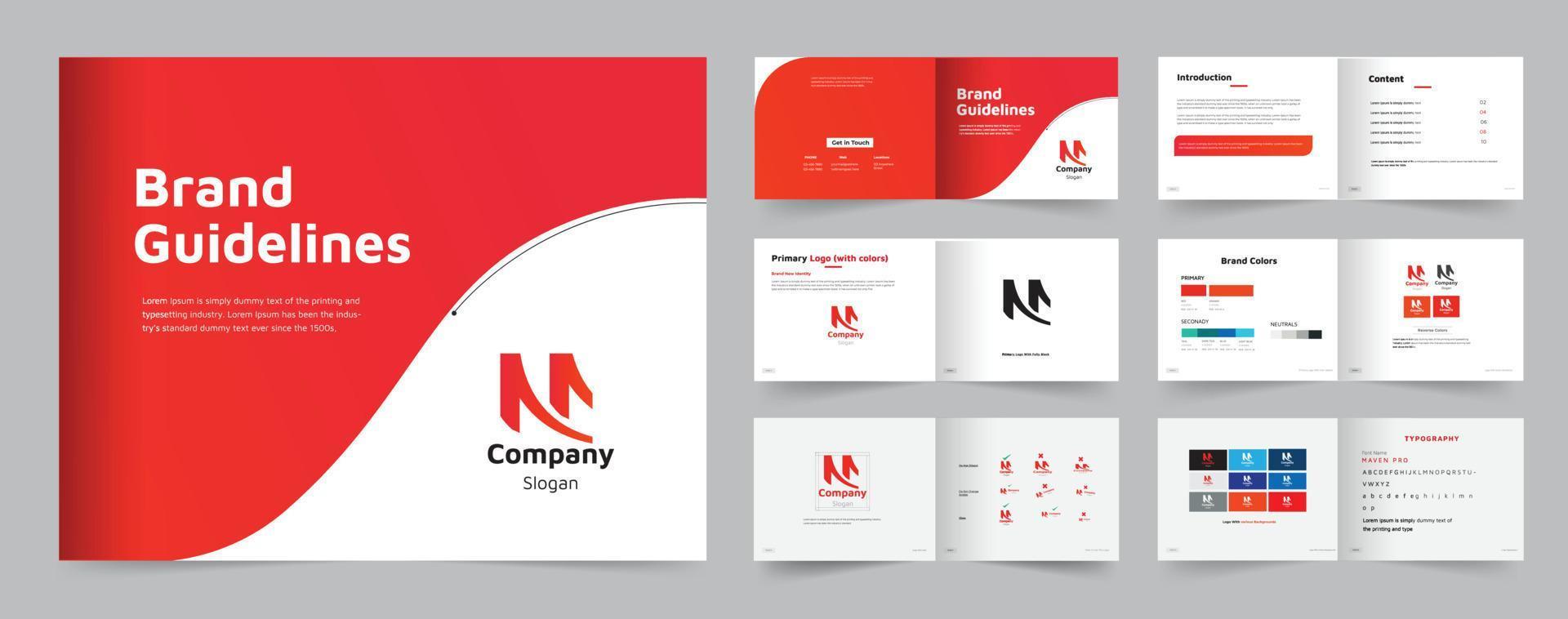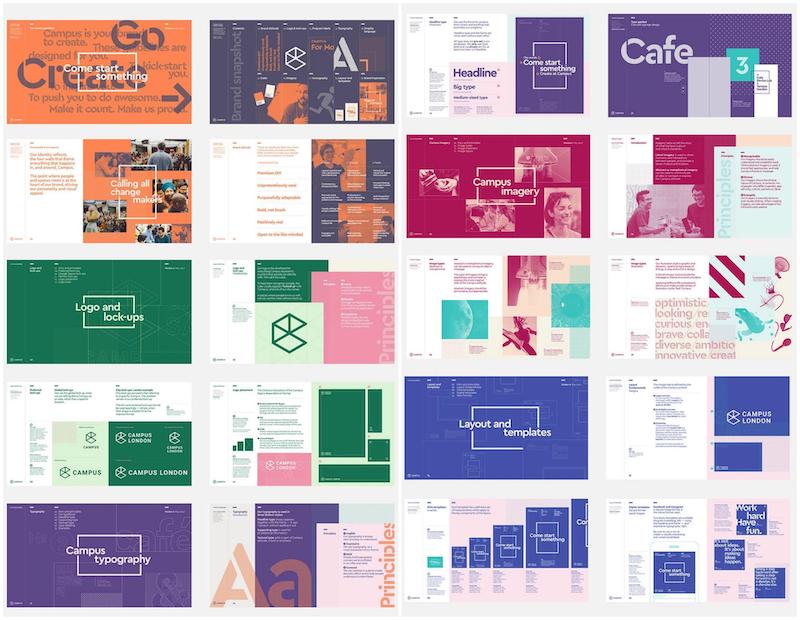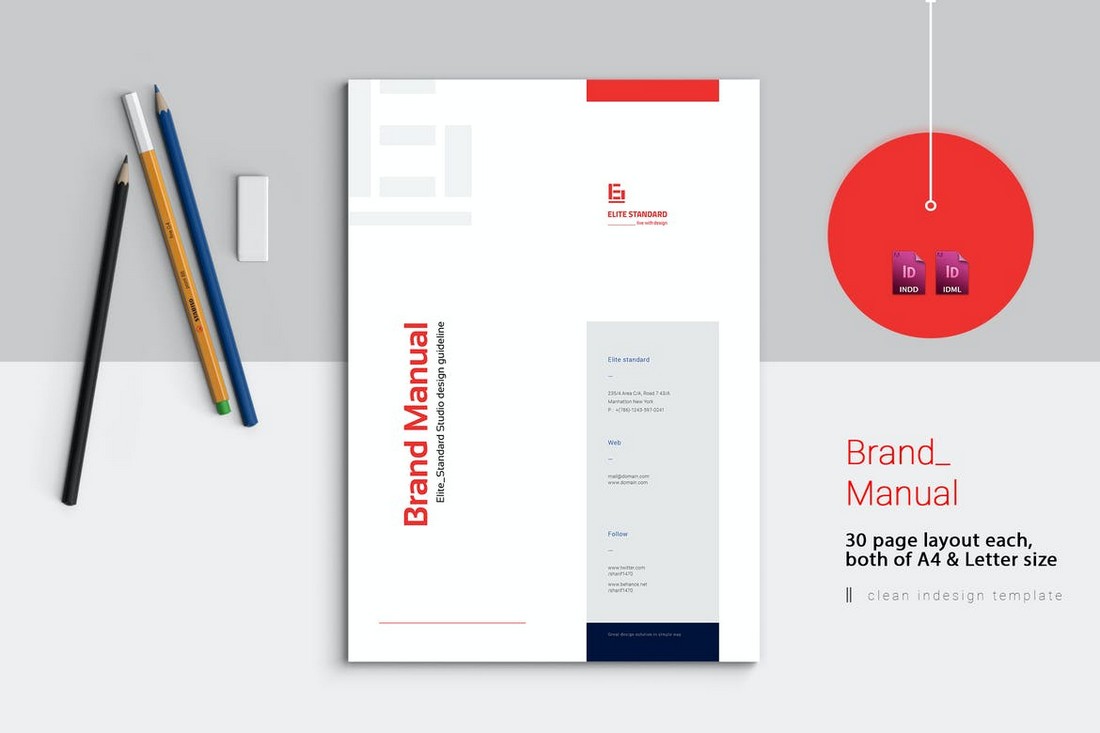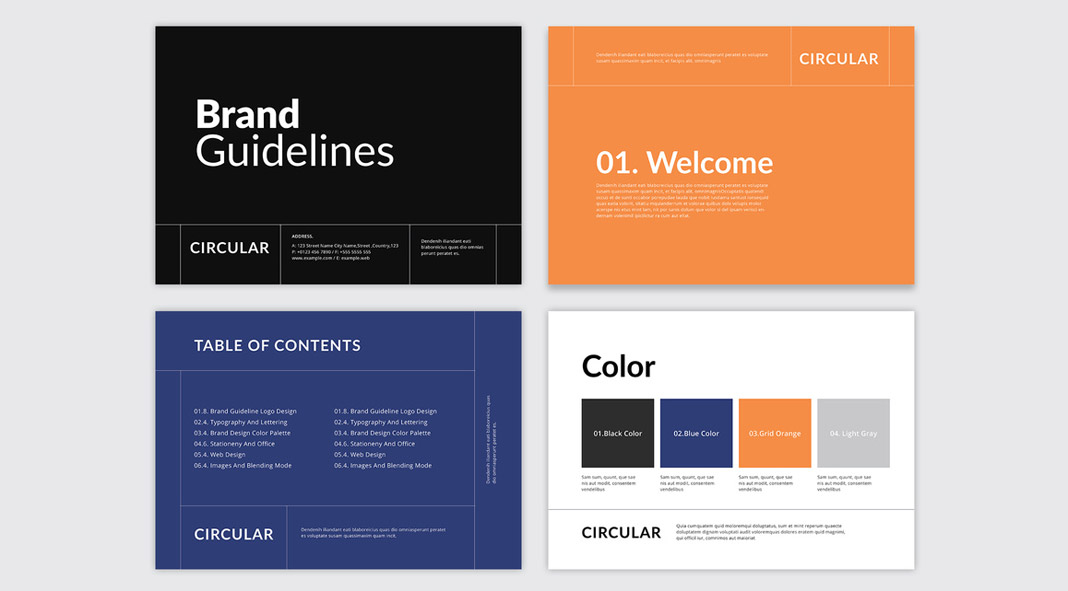Design is brand identity
 Design brand guidelines can certainly play a significant role in shaping a brand’s identity, but it is not the only factor. A brand’s identity encompasses its personality, values, beliefs, and the emotional connections it builds with its audience.
Design brand guidelines can certainly play a significant role in shaping a brand’s identity, but it is not the only factor. A brand’s identity encompasses its personality, values, beliefs, and the emotional connections it builds with its audience.
Design, in this context, refers to the visual elements that are used to represent the brand, such as logos, typography, color schemes, packaging, and other marketing materials. These elements can help communicate a brand’s identity and make it more memorable and recognizable to consumers.
However, brand guidelines are also influenced by other factors such as its products or services, customer service, marketing messages, and overall reputation. All of these elements work together to shape how consumers perceive and interact with a brand.
Therefore, while design can certainly be an essential aspect of a brand’s identity, it is important to remember that a brand’s identity is a complex and multifaceted concept that goes beyond just visual design.
How much for brand guidelines
 The cost of brand guide can vary depending on the scope and complexity of the project, as well as the experience and expertise of the designer or agency creating them. In general, you can expect to pay anywhere from a few hundred dollars to several thousand dollars for a comprehensive set of brand guidelines.
The cost of brand guide can vary depending on the scope and complexity of the project, as well as the experience and expertise of the designer or agency creating them. In general, you can expect to pay anywhere from a few hundred dollars to several thousand dollars for a comprehensive set of brand guidelines.
A basic set of brand guidelines may include a logo, color palette, typography, and basic usage guidelines, and could cost several hundred dollars. A more comprehensive set of brand guidelines may include additional elements such as brand tone of voice, brand personality, photography style, and more detailed usage guidelines, and could cost several thousand dollars or more.
It’s important to consider the value that brand guidelines can bring to your business in terms of creating a consistent and recognizable brand identity, and to choose a designer or agency who has experience in creating effective brand guidelines.
How to design brand guidelines
 Designing branding document is an important process that helps to establish and maintain the consistency and coherence of a brand’s visual identity. Here are some steps you can follow to design brand guidelines:
Designing branding document is an important process that helps to establish and maintain the consistency and coherence of a brand’s visual identity. Here are some steps you can follow to design brand guidelines:
- Define your brand identity: Before creating any guidelines, it’s important to have a clear understanding of your brand’s values, mission, and personality. These elements will help you create a unique visual identity that reflects your brand’s essence.
- Determine your brand’s visual elements: Visual elements are the building blocks of your brand’s visual identity. They include your logo, typography, color palette, imagery, and any other design elements that are specific to your brand.
- Create guidelines for each visual element: Once you have determined your brand’s visual elements, create guidelines that outline how each element should be used. These guidelines should cover everything from logo usage and typography to color usage and imagery.
- Establish design rules: Design rules are the guidelines that govern how your visual elements are used together. For example, you may establish rules for spacing, alignment, and proportionality to ensure that your designs are consistent and cohesive.
- Provide examples: Along with your guidelines, provide examples of how your visual elements should be used in practice. This can help ensure that your guidelines are clear and easily understood.
- Continuously update and maintain your guidelines: Your brand’s visual identity may evolve over time, so it’s important to continuously update and maintain your guidelines to ensure that they remain relevant and accurate.
Overall, creating brand guidelines is a critical step in establishing a strong and recognizable visual identity for your brand. By following these steps, you can create guidelines that are clear, comprehensive, and effective in ensuring consistency and coherence across all your brand’s visual elements.
What do brand guidelines include
 Branding style guide typically include the following elements:
Branding style guide typically include the following elements:
- Brand Identity: This section outlines the company’s brand values, mission statement, and vision, as well as the brand’s overall tone, voice, and personality.
- Logo Guidelines: This section provides specifications for the brand’s logo, including the logo’s size, color, placement, and usage guidelines.
- Typography: This section specifies the typefaces and fonts that should be used for different types of content, including headings, body copy, and subheadings.
- Color Palette: This section outlines the brand’s color scheme, including the primary, secondary, and accent colors, and provides instructions on how to use these colors in different contexts.
- Imagery: This section provides guidelines for the use of photography, illustrations, and other visual elements in the brand’s marketing materials.
- Tone of Voice: This section describes the brand’s voice and tone, and provides guidelines for the language and messaging that should be used in different contexts, such as marketing materials, social media, and customer service.
- Brand Applications: This section provides examples of how the brand should be applied across different mediums, such as print and digital advertising, social media, and packaging.
Overall, brand guidelines are meant to ensure consistency and cohesion in a brand’s messaging and visual identity, helping to build recognition and trust with consumers.
What should a brand guide include
 A brand style guide, also known as a brand style guide or brand book, is a document that outlines the key elements of a brand’s visual and messaging identity. It provides a set of guidelines for maintaining consistency across all of the brand’s communications and marketing efforts. Here are some of the elements that a brand guide should typically include:
A brand style guide, also known as a brand style guide or brand book, is a document that outlines the key elements of a brand’s visual and messaging identity. It provides a set of guidelines for maintaining consistency across all of the brand’s communications and marketing efforts. Here are some of the elements that a brand guide should typically include:
- Brand story and mission: A brief description of the brand’s history, values, and mission statement.
- Brand personality and voice: An explanation of the brand’s tone, voice, and personality traits that should be reflected in all messaging.
- Logo and visual identity: Guidelines for the use of the brand’s logo, including color schemes, fonts, and imagery.
- Typography: Guidelines for the use of fonts and typography across all brand communications.
- Color palette: A color palette that represents the brand and guidelines for its use in all communications.
- Imagery and photography: Guidelines for the use of imagery and photography, including the types of images that should be used and the style of photography that reflects the brand.
- Brand messaging: Guidelines for the use of language and messaging, including the brand’s key messaging points and preferred language.
- Tone of voice: Guidelines for the use of tone in brand communications, including the appropriate level of formality or informality.
- Social media guidelines: Guidelines for using the brand on social media platforms.
- Editorial style guide: A set of guidelines for grammar, punctuation, and style to ensure consistency across all written communications.
- Examples of correct and incorrect usage: Examples of how to use the brand correctly and incorrectly to ensure consistency.
Overall, a brand guide serves as a reference for anyone involved in creating content for the brand and helps maintain consistency across all channels and platforms.
Design guidelines template
 Here’s a template for design branding style guides:
Here’s a template for design branding style guides:
- Purpose: State the purpose of the design guidelines and explain why they are important.
- Design principles: List the key design principles that should guide all design decisions. Examples of design principles could include simplicity, consistency, usability, accessibility, and scalability.
- Brand identity: Describe the brand identity and how it should be reflected in the design. This could include the brand’s color palette, typography, and visual style.
- Design elements: Describe the key design elements that should be used consistently across all designs. This could include typography, color, layout, imagery, and iconography.
- Design process: Outline the design process that should be followed to ensure that designs meet the required standards. This could include steps such as research, ideation, prototyping, user testing, and feedback.
- Design tools: List the design tools that should be used to create designs, along with any guidelines for using them effectively. This could include software such as Adobe Photoshop or Sketch, or specific design frameworks such as Bootstrap or Material Design.
- Design assets: Provide a library of design assets that can be used to create designs, such as logos, icons, and templates.
- Accessibility: Describe how designs should be made accessible to users with disabilities, including guidelines for color contrast, font size, and alt text for images.
- Review and approval process: Explain how designs will be reviewed and approved, including who will be involved in the review process and what criteria will be used to evaluate designs.
- Glossary of terms: Provide a glossary of design terms and concepts that designers should be familiar with, to ensure consistency in communication and understanding.
Remember, design guidelines are meant to be a living document and should be updated regularly to reflect changes in design trends, technology, and user needs.
FAQs: Unlocking Insights
How Often Should I Update My Brand Guidelines?
Regular updates are essential to stay relevant. Aim for an annual review, ensuring your brand guidelines evolve with your business.
Can Small Businesses Benefit from Design Brand Guidelines?
Absolutely. Irrespective of size, brand guidelines provide a roadmap for consistent communication, laying the foundation for growth.
What if My Brand Evolves? Do I Need a Complete Redesign?
Not necessarily. Incremental updates can align your brand with evolving trends while maintaining the core essence. Consistency is key.
How Detailed Should My Brand Guidelines Be?
Detail is crucial, but clarity is equally vital. Strike a balance, offering comprehensive guidance without overwhelming your team.
Are Brand Guidelines Only for External Communication?
No, they are equally essential for internal coherence. Your team should embody the brand vision in every communication.
How Can I Ensure Global Consistency in Branding?
Clearly define your guidelines, ensuring cultural nuances are considered. Flexibility within a framework is the key to global consistency.
Conclusion: Designing Success, One Guideline at a Time
In the ever-evolving business landscape, Design brand guidelines are your compass. Crafted with precision, they navigate your brand through the intricacies of design, ensuring a consistent, resonant, and memorable identity.

